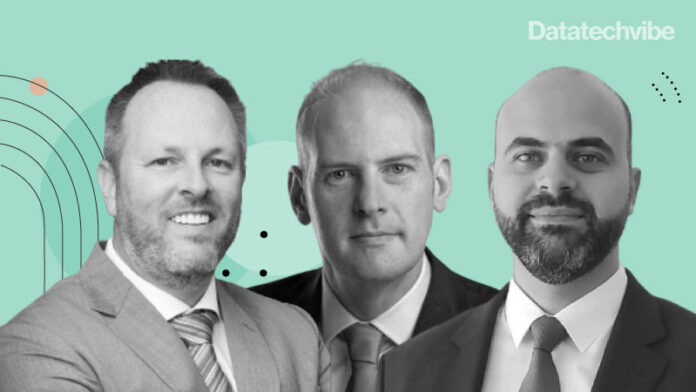Dr Chris Cooper, GM, Data Center Group, Middle East & Africa, Peter Jamieson, CTO, Department of Tourism & Culture Abu Dhabi, UAE and Bassel Kassem, Regional Manager at Nutanix, speak to Ravi Raman, Publisher & Storytelling Director at Vibe Projects, at ECDC 2021. The discussion centres around business needs, how to chalk out the right cloud strategy for your enterprise. The intersection of the cloud with other technologies. And how people-centric technologies should be. Read all about it here.
Ravi Raman: A cloud strategy has so many components, where do companies go wrong? And why?
Peter Jamieson: Cloud has been in vogue since the last decade. However, many organisations do not understand what it is or know to harness its potential. The cloud computing landscape has evolved. It’s not limited to creating instantaneous platforms to save data. Nor is it restricted to cutting costs while delivering services that enable innovation. The process begins with businesses identifying their requirements and how they can be made simple for the end-user.
Bassel Kassem: Technology is crucial for cloud strategies. It is essential how people enable operations. They need to decide if they want to go with the hybrid cloud or native cloud. Surrounding yourself with the right technology is essential. It is an ongoing journey with people and technology.
Ravi Raman: Where do people stand in an enterprise’s digital transformation?
Dr Chris Cooper: When boundaries of technology shift, we evolve. Whatever roles we are in, we must address challenges by understanding the needs of the firm.
Bassel Kassem: People are at the centre of transformation. People’s behaviour change, their mentalities change when switching from one technology to another. The way processes and journeys are managed has changed. There is a visible shift in the way the organisation functions. The transition is primarily within the organisation, within the people. Technology can be adaptable instantaneously, but people don’t, and that is why we need a shift in mindset and attitude.
Peter Jamieson: When we adopted virtualisation, it wasn’t easy to show results instantaneously. We have 100 per cent adapted to the cloud. This change came gradually. There was an initial phase during transformation when we faced difficulty, but now, if we look at our applications and design or transform them. We have to understand how it behaves during transformation or when it migrates to a new platform. But as we know, every organisation has its own pace.
Ravi Raman: The pandemic threw a new set of challenges, and quite a lot of businesses hastened to adopt cloud. How did it pan out? Did it go as planned?
Peter Jamieson: It needs to be seen how organisations chose to adopt the digitisation process. Most organisations were trying to get more hi-tech, the pandemic hastened the process. Businesses must adapt to experiential purchasing. Online supply chains have been designed to provide an experiential purchase experience. Companies and stores are now focusing on that. Cloud has undoubtedly pushed it, but it is not the sole reason.
Dr Chris Cooper: This is a journey; how enterprises adopt the cloud is crucial. Cloud is not the end goal of digitalisation. The world has changed significantly in the last two years. Online has become a trend. It is something like “I will never buy anything that is not online”, high fashion has taken a beating, but the industry isn’t getting killed. What we are getting now is an experience. Online shopping has become pervasive. Also, the cloud is not the answer to everything; everything is pretty much online now. We have technologies like IoT, 5G, blockchain, Edge computing – to support tech.
Peter Jamieson: How vulnerable cloud support is? Cloud helps to stay connected and get work done from digital transformation to experiential purchasing. We all have seen a massive change in the business landscape and strategies.
Bassel Kassem: Covid-19 has changed a couple of things. It came with financial pressure on almost every business. It has brought in many changes in how the cloud is adopted. Covid-19 has increased the financial burden on enterprises. CFOs are pressuring CIOs on how much the organisation has spent in cloud computing. Consumers chose to move to a more technical ground. Businesses have to adapt to provide an experiential shopping experience.
Ravi Raman: How can governance be balanced with Compliance?
Peter Jamieson: Governance has to be omnipresent. How businesses uphold their ethics and policies – is also governance. Cloud is pretty much everywhere, but it has to be regulated based on the nature of applications.
The conference was supported by Platinum Partner Nutanix. Strategic Partner Lenovo, Intel, and Enterprise Technology Partner Confluent, Media Partners Enterprise Talk and IT Security Wire. The session video can be watched here









